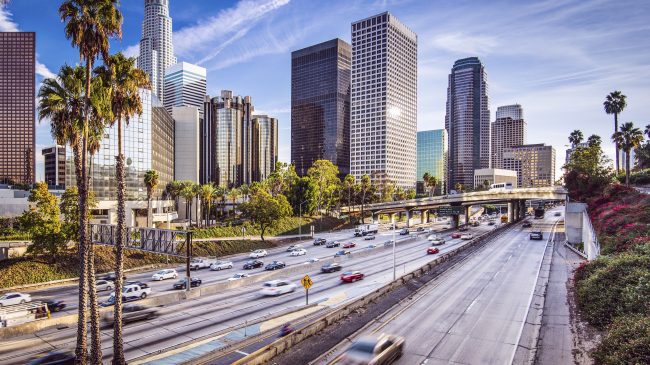The ongoing battle against the COVID-19 pandemic has been brutal. There have already been over 30,500 COVID-related deaths in California. In addition to managing this crisis and developing better strategies to get vaccines out more quickly, policymakers need to also examine the long-term impact the pandemic will have on important issues and vexing problems related to the economy, climate change, infrastructure, and homelessness.
Transportation accounts for about 40 percent of California’s greenhouse gas emissions. The pandemic has shown workers and companies that many of us can work from home and a lot of in-person meetings and conferences can be effectively replaced with group calls and webinars. The need to reduce in-person contact has dramatically accelerated the adoption of these technologies, which should continue to improve and evolve as demand increases.
As more employers shift to work-from-home policies, we could see a permanent reduction in commuting and business travel, thereby lowering carbon emissions from cars, buses, and planes. And the state can get many of these climate change benefits with little or no policy changes. About the only thing policymakers need to do is encourage competition among internet providers, which would help workers and companies by reducing costs and increasing connection speeds.
Admittedly, there will be substantial changes and collateral damage from a large-scale permanent shift to remote work. Among others, office buildings will lose value, retailers and restaurants in business districts could be hurt, and demand for mass transit commuting options will fall.
But if a primary state goal is to minimize greenhouse gas emissions, policymakers should patiently watch these trends emerge and resist pressure from interest groups that will continue to urge the construction of costly rail, transit, and other pre-pandemic projects. Even operating a fully-electrified rail system adds to greenhouse gas emissions to the extent that the electricity is still generated from fossil fuels. And travel patterns will continue to change over the long-term. People who are able to work from home, for example, may choose different places to live and prioritize quality of life improvements if they’re less concerned about commute times than they’ve ever been.
With less demand for office space, it is important to let developers convert commercial buildings to residential use. This is also the case with hotels and retail facilities that go out of business in the coming months and years. California already had an excess of retail space before the pandemic, and now, unfortunately, this surplus is growing as many stores and restaurants are permanently closing. Likewise, even before the pandemic, developers were converting shuttered malls to mixed-use communities, turning old office buildings into apartment buildings or hotels, and storefronts into live/workspaces.
Thankfully, much of the state’s underutilized commercial space can be converted to housing. And it can be done at lower costs than building homes from scratch, especially in high-cost areas in California’s major cities and along the coast. By rezoning more areas to residential use, or de-zoning them entirely, local governments can facilitate the transition of commercial space to housing rather than perpetuating commercial vacancies at the risk of blight.
Converted properties would add much-needed supply to California’s housing overly expensive market. More housing supply would help drive down prices and rents. California governments have already rented hotel rooms and acquired motels to accommodate homeless individuals during the pandemic and beyond, so this added supply could play a role in addressing the state’s massive homelessness problem.
The COVID-19 pandemic is forcing Californians and policymakers to adapt to accelerating trends that were already underway. Technology is allowing us to do more of our work, shopping, and playing from home. We’re all anxious to return to pre-pandemic activities but we can also take advantage of the transformations we’re experiencing to reduce greenhouse gas emissions and the state’s housing problems. And, importantly, we can obtain most of these benefits with relatively minor policy changes and without large public spending.
Hopefully, California’s political leadership will recognize how residential housing conversions and the greater use of telecommuting can help the state meet its long-term climate and housing goals. Rather than over-regulating these areas, policymakers should let innovation and adaptation create these changes in the public interest.
A version of this column previously appeared in the OC Register.

